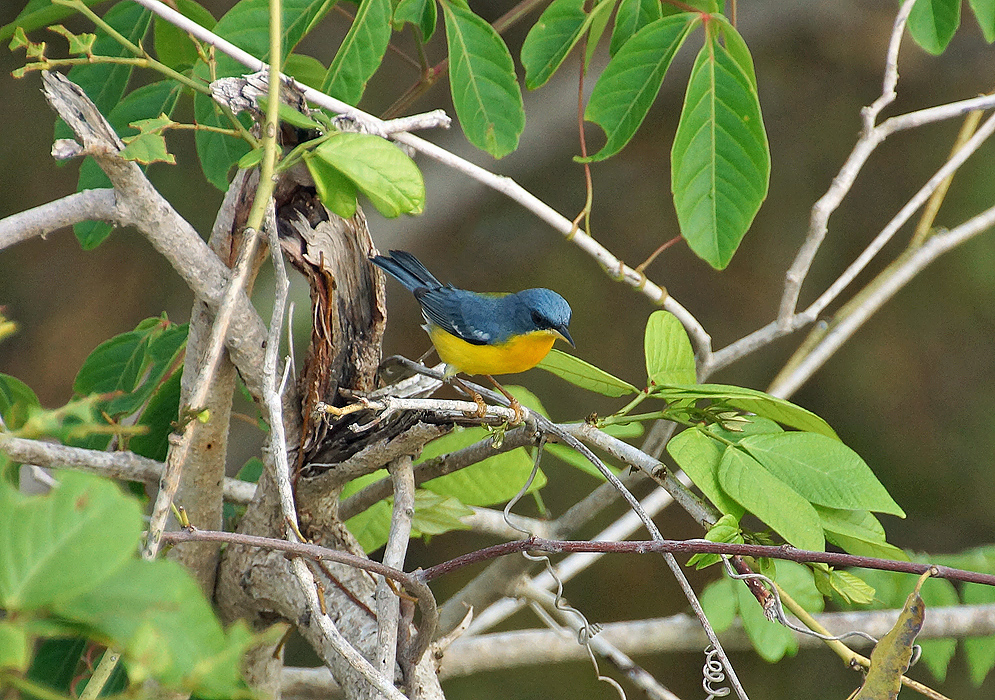This post has 11 Simple Fields-fields attached. Show fields.

The Tropical Parula is a small New World warbler with a broad geographic range. This species inhabits areas from southern Texas and northwest Mexico, extending through Central America to northern Argentina. It's a non-migratory bird, though some northern populations exhibit local movements. The Tropical Parula measures approximately 4.3 inches in length. It displays mainly blue-grey upperparts, a greenish back patch, and two white wing bars. The underparts are yellow, transitioning to orange on the breast. Males feature a distinctive black patch from the bill to behind the eye, while females are slightly duller and lack this black marking. Immature birds are duller in plumage, lack the wing bars, and have a grey band on the breast. The species has about 14 subspecies, varying in plumage tones. The habitat of the Tropical Parula is predominantly hills and premontane forests, avoiding areas like the Amazon basin. It adapts well to moderately disturbed and secondary forests and tolerates habitat fragmentation. Its preferred environments include a mix of primary forest, wet premontane secondary forest, and areas with abundant epiphytes and hemiepiphytes. This bird feeds primarily on insects, spiders, and occasionally berries, often seen attending mixed-species feeding flocks. Its nesting habits involve building nests in clumps of epiphytes, particularly Spanish moss, in trees, usually laying two eggs per clutch. The Tropical Parula forages actively from mid-level to treetops, often along streams. It searches among leaves and can hover momentarily to snatch insects from foliage or catch flying insects mid-air. Its diet mainly consists of various insects, including wasps, ants, and flies. In the tropics, pairs may remain on territory throughout the year, while in Texas, they are more likely to migrate in winter. Nests are typically placed 8-40 feet above the ground in hanging Spanish moss or similar structures. Construction materials include moss, palmetto bark, grass, roots, and animal hair, lined with plant down and feathers. The global population of the Tropical Parula is estimated at around 20 million mature individuals. Photographed in Minca, Colombia.

